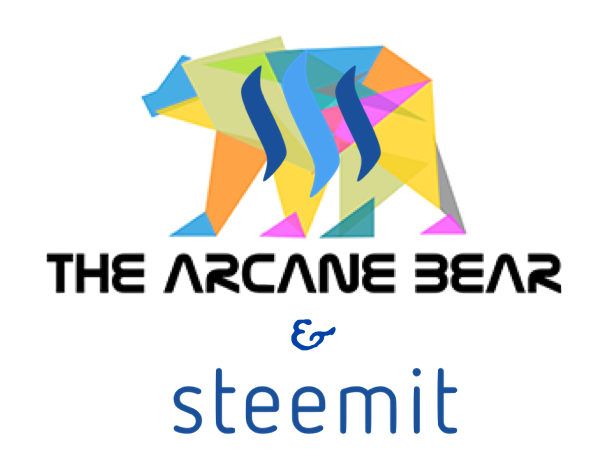New to crypto? Knowing the terms will help!
Cryptic Glossary A - L
No one said figuring out cryptos was easy, so much to learn and new developments and changes being made all the time. Don't worry it's worth it - and you're not alone!

These definitions can help you decipher what's going on in the cryptosphere
Altcoin: Any form of digital crypto currency that isn't Bitcoin - an alternative coin
Address: Cryptocurrency addresses are used to receive and send transactions on the network. An address is a string of alphanumeric characters or a scannable QR code
Agreement Ledge : A distributed ledger used by two or more parties to negotiate and reach an agreement.
Attestation Ledger: A distributed ledger providing a durable record of agreements, commitments or statements. One that provides evidence (attestation) that these agreements, commitments or statements were made.
ASIC: A common acronym for "Application Specific Integrated Circuit". ASICs are silicon chips specifically designed to do a single task. In the case of bitcoin, they are designed to process SHA-256 hashing problems to mine new bitcoins.
Bitcoin (uppercase): The well-known cryptocurrency, based on the proof-of-work blockchain.
bitcoin (lowercase): The specific collection of technologies used by Bitcoin’s ledger, a particular solution. Note that the currency is itself one of these technologies, as it provides the miners with the incentive to mine.
Blockchain: A blockchain is a distributed ledger, made of unchangeable digitally recorded data in blocks. Each block is attached permanently to the next block, using a cryptographic signature. This allows blockchains to be used like a ledger, which can be shared and accessed by anyone with the appropriate permissions.
Block Height: Block height refers to the number of blocks connected together in the block chain. For example, Height 0, would be the very first block, which is also called the Genesis Block.
Block Reward: The reward given to a miner which has successfully hashed a transaction block. Block rewards can be a mixture of coins and transaction fees, depending on the policy used by the cryptocurrency in question, and whether all of the coins have already been successfully mined. The current block reward for the Bitcoin network is 25 bitcoins for each block.
Confirmation: A confirmation means that the blockchain transaction has been verified by the network. This happens through a process known as mining, in a proof-of-work system (e.g. Bitcoin). Once a transaction is confirmed, it cannot be reversed or double spent. The more confirmations a transaction has, the harder it becomes to perform a double spend attack.
Consensus Process: The process during which a group of peers responsible for maintaining a distributed ledger use to reach consensus on the ledger’s contents.
Consensus Point: A point – either in time, or defined in terms of a set number or volume of records to be added to the ledger – where peers meet to agree on the state of the ledger.
Cryptocurrency: A form of digital currency based on mathematics where encryption techniques are used to regulate the generation of units of currency and verify the transfer of funds. Furthermore, cryptocurrencies operate independently of a central bank.
Digital Identity: A digital identity is an online or networked identity adopted or claimed in cyberspace by an individual, organization, or electronic device.
Distributed Ledge: Distributed ledgers are a type of database that are spread across multiple sites, countries or institutions. Records are stored one after the other in a continuous ledger. Distributed ledger data can be either "permissioned" or "unpermissioned" to control who can view it.
Difficulty: Difficulty, in Proof-of-Work mining, is how hard it is to verify blocks in a blockchain network. In the Bitcoin network, the difficulty of mining adjusts verifying blocks every 2016 blocks. This is to keep block verification time at ten minutes.
Double Spend: Double spend refers to a scenario where someone tries to send a bitcoin transaction to two different recipients at the same time. However, once a bitcoin transaction is confirmed, it makes it nearly impossible to double spend it. The more confirmations that a particular transaction has, the harder it becomes to double spend the bitcoins.
Genesis Block: The first block in a block chain.
Halving: There is a finite supply of bitcoins, which makes them a scarce digital commodity. The total amount of bitcoins that will ever be issued is 21 million. The number of bitcoins generated per block is decreased 50% every four years. This is called “halving.” The final halving will take place in the year 2140.
Hashrate: The number of hashes that can be performed by a bitcoin miner in a given period of time (usually a second).
Initial Coin Offering (ICO): An Initial Coin Offering is when a start-up offers a certain amount of tokens for a set price to fund their initial efforts to get their project up and running.
Ledger: An append-only record store, where records are immutable and may hold more general information than financial records.
Educate yourself!!
SELF PROCLAIMED STEEMIT AMBASSADOR
For Best Results: Resteem, Upvote, Follow and Comment!
nice idea mate! I like it
Thank you!
Good one!! Thanks for sharing!
Great :)
resteemed so more minnows can learn :) thanks for sharing
Thank you!
This is going to help a lot of people! Resteem
Great! The rest to come
Really good information, thank you! Resteemed both this glossary and part two.
Thanks!
Thanks for the detailed clarification!!!